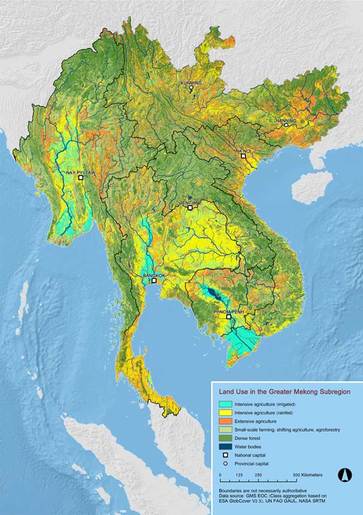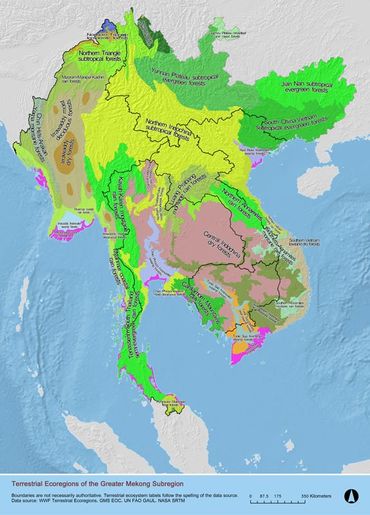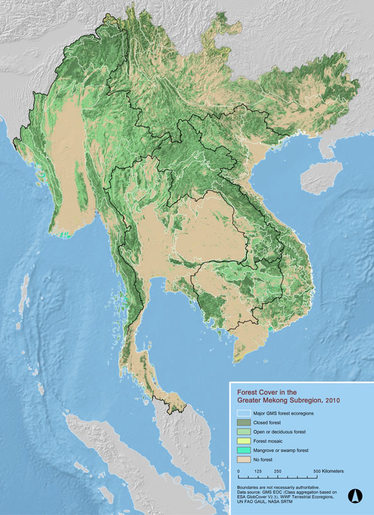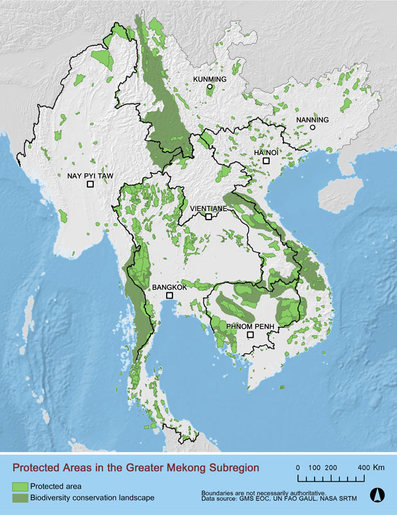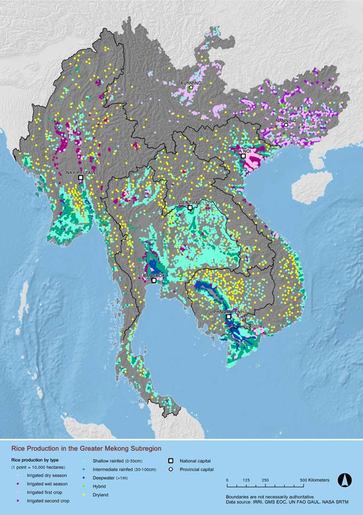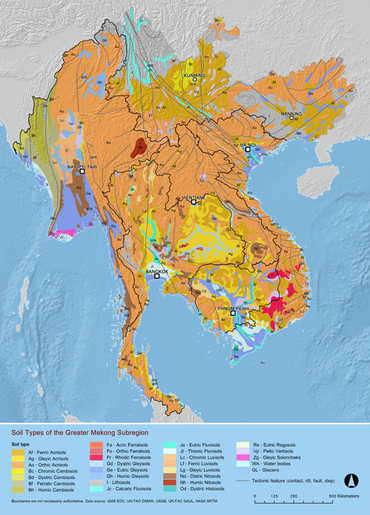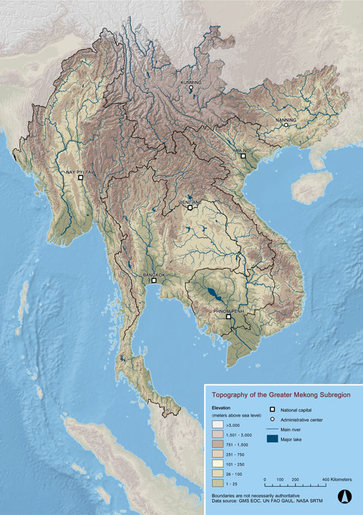-
November 30, 2017World Resources Institute
Roots of Prosperity: The Economics and Finance of Restoring Land
-
September 30, 2017Climate Focus
How Improved Land Use Can Contribute to the 1.5°C Goal of the Paris Agreement
-
January 31, 2017World Resources Institute
Attracting Private Investment to Landscape Restoration: A Roadmap
-
November 30, 2016FAO
State of the World's Forests 2016 - Forests and agriculture: land-use challenges and opportunities
-
September 11, 2016WWF-Cambodia
Mapping and Valuing Ecosystem Services in Mondulkiri: Outcomes and Recommendations for Sustainable and Inclusive Land Use Planning in Cambodia
-
September 08, 2016Tropenbos International and EcoAgriculture Partners
Guidelines-Participatory Planning, Monitoring and Evaluation of Multistakeholder Platforms in Integrated Landscape Initiatives
-
June 30, 2016UNEP
Unlocking the Sustainable Potential Of Land Resources Evaluation Systems, Strategies and Tools
-
October 07, 2015WWF
Linking Rapid Erosion of the Mekong River Delta to Human Activities
-
November 10, 2014EcoAgriculture Partners
Spatial Planning and Monitoring of Landscape Interventions: Maps to Link People with their Landscapes
-
November 10, 2014EcoAgriculture Partners
Ground-Based Photo-Monitoring of Landscape Changes Arising from Sustainable Land Management Practices
-
October 31, 2014EcoAgriculture Partners
A Landscape Perspective on Monitoring & Evaluation for Sustainable Land Management
-
April 24, 2014SANDEE
Policy Brief: Operationalizing Environmental Economic National Accounts
-
January 23, 2014UNEP
ASSESSING GLOBAL LAND USE: Balancing Consumption With Sustainable Supply
-
December 16, 2013Asian Development Bank
ADB: Agriculture, Natural Resources and Environment Initial Sector Assessment, Strategy and Road Map for Myanmar
-
14th March 2018
Source: Bangkok PostGovt ready to scrap region border checks
-
15th January 2018
Source: Organisation for Economic Co-operation and Development (OECD)Rice and risks in the Mekong River Delta
-
10th January 2018
Source: National News Bureau of ThailandThailand - Government representative to inspect area of elephant encroachment
-
28th November 2017
Source: Eleven MyanmarMyanmar - KIO releases a warning against land-grabbing
-
25th November 2017
Source: The NationMekong region cities ‘face same problems’
-
22nd November 2017
Source: Khmer TimesMinistry to investigate Prey Lang land grabs
-
6th November 2017
Source: VietNamNet BridgeViet Nam - Landslides in Mekong Delta could lead to serious flooding
-
12th September 2017
Source: Eco-BusinessMuch of the planet’s land severely degraded owing to increased consumption, UN warns
-
1st August 2017
Source: VietNamNet BridgeViet Nam - Quang Ninh considers using artificial sand as building material
-
13th July 2017
Source: Eco-Business2016 was the deadliest year ever for environmental defenders
-
26th June 2017
Source: VietNamNet BridgeViet Nam - Mekong Delta faces uncertain future as landslides increase
-
26th June 2017
Source: VietNamNet BridgeViet Nam - Mekong blighted by river erosion
-
22nd June 2017
Source: The NationThailand - Forestry and Wildlife officers on Koh Lanta seize 100 rai of violated land
-
21st June 2017
Source: Ministry of Environmental ProtectionChina unrolls nationwide soil pollution survey
-
21st June 2017
Source: Yunnan Environmental Protection DepartmentChina - Soil monitoring network passes milestone
-
19th June 2017
Source: The NationThailand - NGOs oppose plan to use A44 to allow ALRO land for energy
-
18th June 2017
Source: VietNamNet BridgeViet Nam - Measures to prevent landslides in the Mekong Delta
-
27th May 2017
Source: VietNamNet BridgeVeit Nam - Hundred of hectares of forestland encroached upon in Gia Lai
-
24th May 2017
Source: Myanmar TimesMyanmar - Concerns over seized lands hamper agro plan
-
17th May 2017
Source: Viet Nam NewsViet Nam - Urgent measures needed to protect landslide-prone areas in Mekong Delta: Deputy PM
-
17th May 2017
Source: VietNamNet BridgeVietnam continues exporting sand despite warnings about depletion
-
16th May 2017
Source: VietNamNet BridgeViet Nam - Mekong Delta faces increased risk of landslides as sediment loss continues
-
16th May 2017
Source: Bangkok PostThailand - CBD land prices still increasing
-
15th May 2017
Source: Myanmar TimesMyanmar - Farmers protest distribution of old farmlands
-
11th May 2017
Source: VietNamNet BridgeViet Nam - Dong Thap extends state of emergency, erosion continues
-
11th May 2017
Source: Khmer TimesCambodia - Wildlife charity land dispute rumbles on
-
11th May 2017
Source: Myanmar TimesLand rights major risk for EU-Myanmar IPA
-
7th May 2017
Source: ADBAfter 50 years, Asian Development Bank looks ahead
-
3rd May 2017
Source: VietNamNet BridgeViet Nam - Environmental minister proposes solutions on landslides
-
3rd April 2017
Source: The NationThailand - Old landmines get destroyed in Surin
-
29th March 2017
Source: Bangkok PostThailand - Alro clears wind farm development
-
25th January 2017
Source: The Cambodia DialyCambodia - Environment Ministry Now Controls 40 Percent of Cambodia’s Land
-
25th January 2017
Source: MizzimaAuthorities to confiscate unused Myanmar farmland
-
24th January 2017
Source: The Phnom Penh PostCambodia - Mondulkiri to try new land scheme
-
18th January 2017
Source: Ministry of Environmental Protection (MEP)China sets up lifelong accountability system to control soil pollution
-
11th January 2017
Source: VietNamNet BridgeViet Nam - Elephants in Dak Lak become more aggressive as loss of habitat continues
-
8th January 2017
Source: ADBADB News - ADB Operations Reach a Record $31.5 Billion in 2016
-
4th January 2017
Source: The Myanmar TimesMyanmar - Government holds off on paddy purchases
-
22nd December 2016
Source: Ministry of Natural Resources and EnvironmentViet Nam Land Administration Project (VLAP): Contribute to building land database system
-
30th October 2016
Source: The Myanmar TimesMyanmar - Concerns for soil quality sparks Sagaing survey
-
30th September 2016
Source: VietNamNet BridgeMekong Delta islets losing farmland to serious erosion
-
31st August 2016
Source: VietNamNet BridgeConversion of dipterocarp forests into rubber plantations harms environment
-
21st August 2016
Source: Ministry of Natural Resources and EnvironmentViet Nam - International cooperation to enhance effectiveness of land management
-
21st August 2016
Source: Ministry of Natural Resources and Environment'Green Business' - a key for sustainable tourism development in Viet Nam
-
30th July 2016
Source: National News Bureau of Thailand (NNT)Thailand - Special operation unit reclaims encroached areas of forest on Samui and Pha Ngan islands
